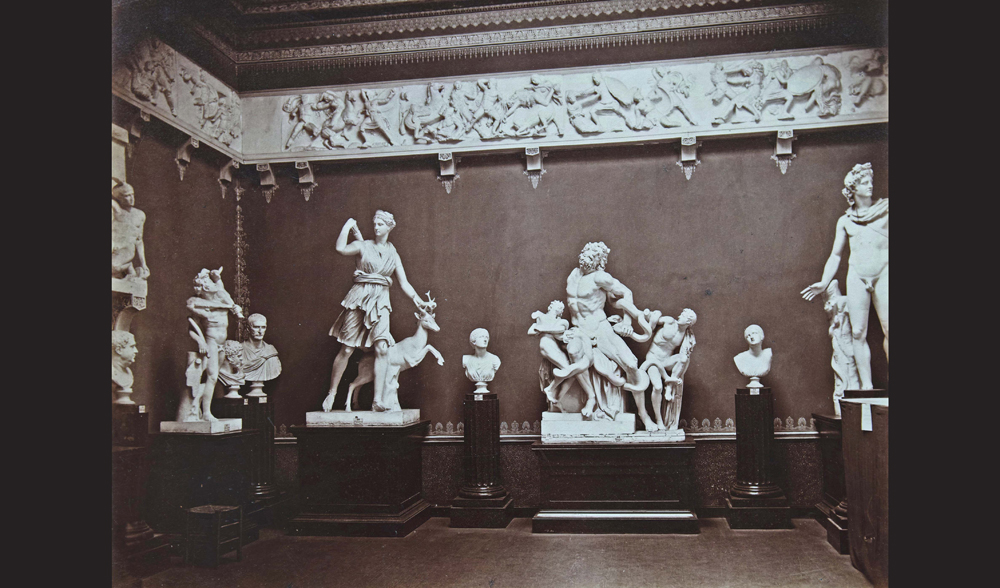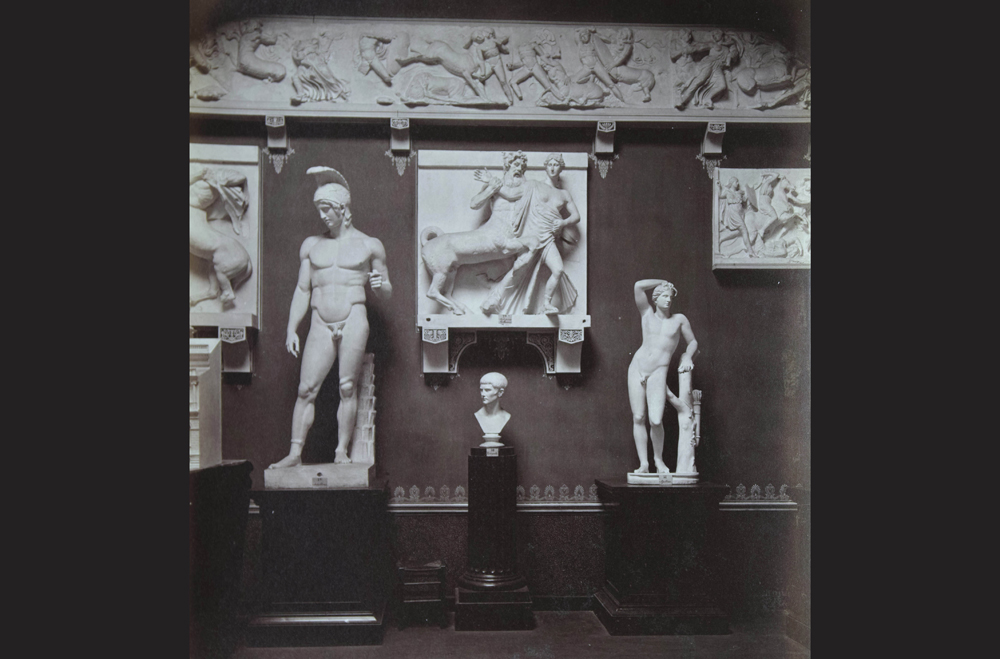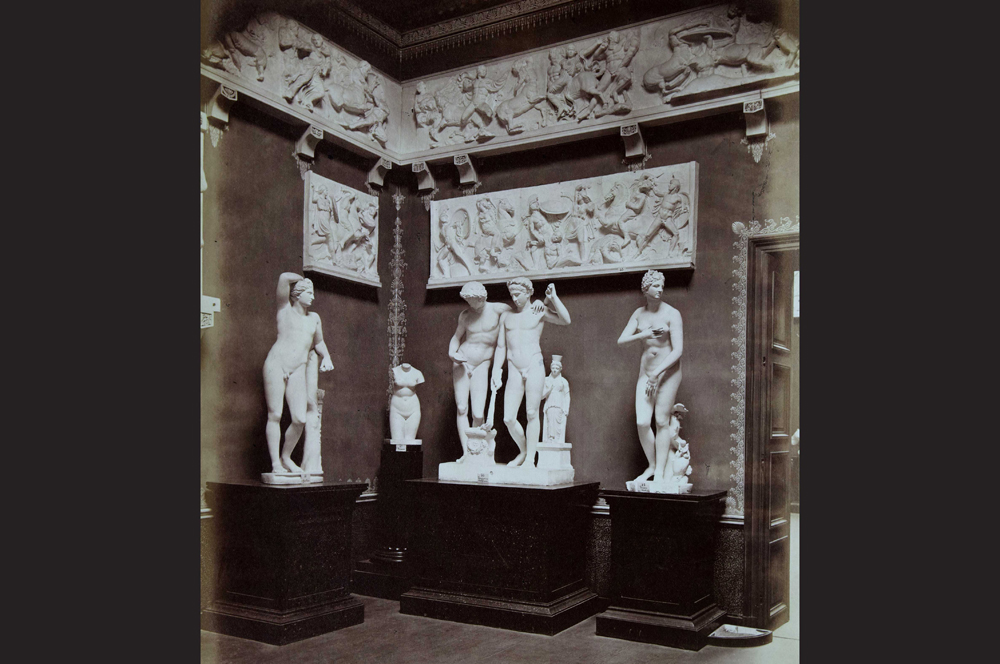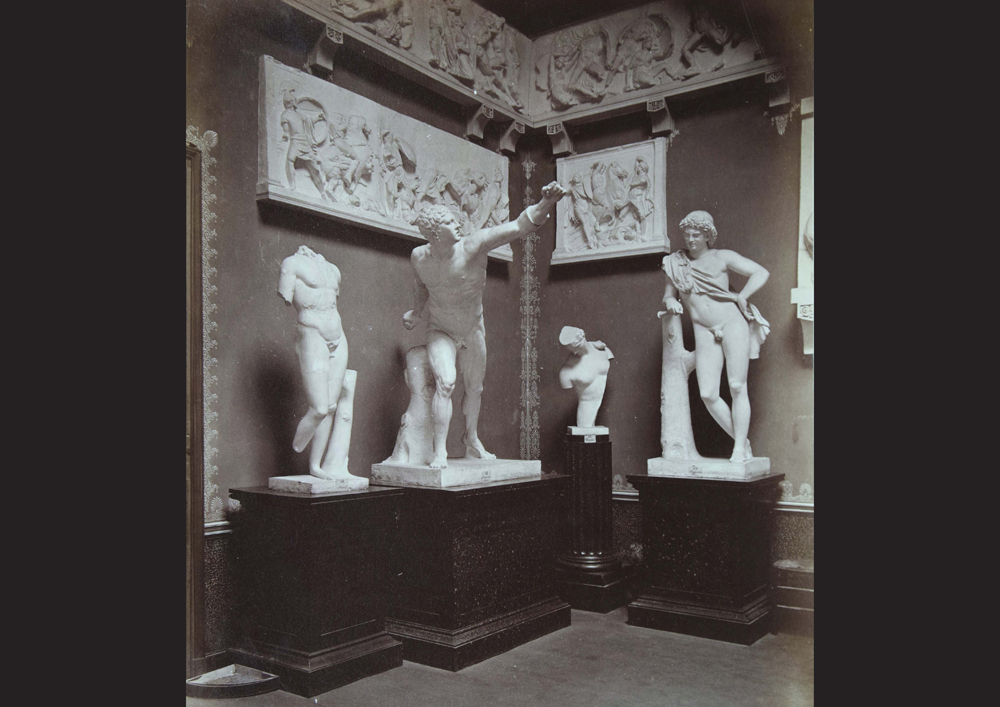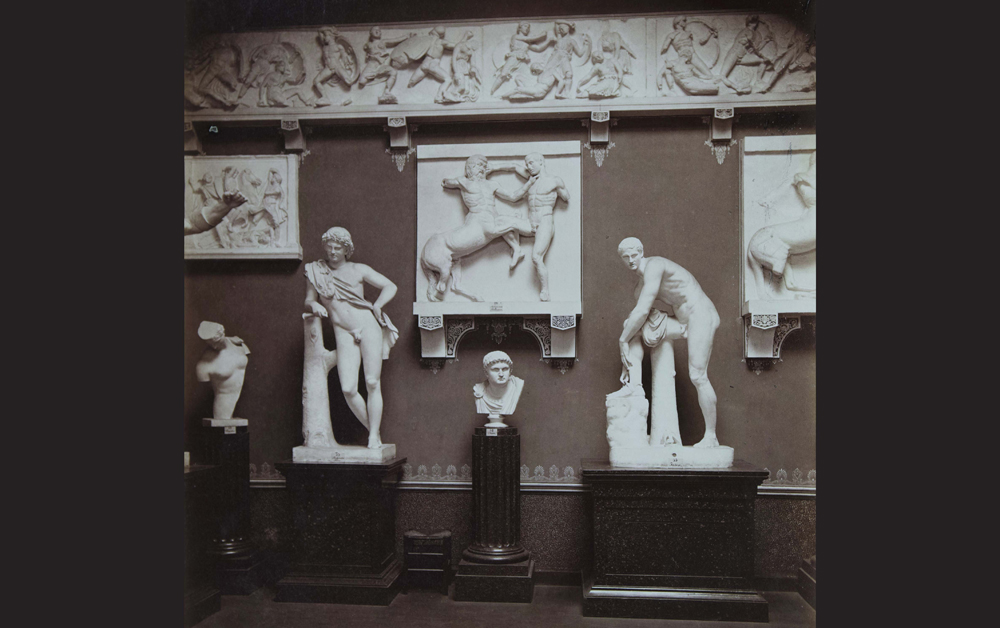Second skylight room with antiquities
Laocoön
as the epitome of the antique
Since its discovery in 1506, the Hellenistic “Laocoön Group” had been regarded as the undisputed masterpiece of Greek sculpture. At the Städel, as in the Louvre under Napoleon, it was granted the central place of honour. Through the viewing axis, the sculpture group was visually connected with Raphael’s art in the reception rooms, the painting gallery, and not least with the bust of the founder at the other end of the floor.
Against the intensely red walls, the light-coloured casts of other famous sculptures appeared to radiate brightly. Placed on each of the room’s walls were parts of the frieze of the Temple of Apollo at Phigalia-Bassae, showing the “Battle of the Amazons”. At the time, the original had already been moved to the British Museum. On the end wall, the “Laocoön Group” was flanked by the “Apollo Belvedere”, the “Zeus of Otricoli” and the “Artemis of Versailles”. On the opposite side stood two works that at the time were thought to represent Castor and Pollux, as well as the “Borghese Gladiator”. Placed in the centre of each of the longitudinal walls were two male nudes, the “Ares Borghese” on the right and the “Landsdowne Sandal Binder” on the left. Together with the respective flanking figures, these works embodied the principles of rest and movement, which Ursula Mandel has identified as the leitmotifs of contrasting juxtaposition (Mandel 1994, p. 240).
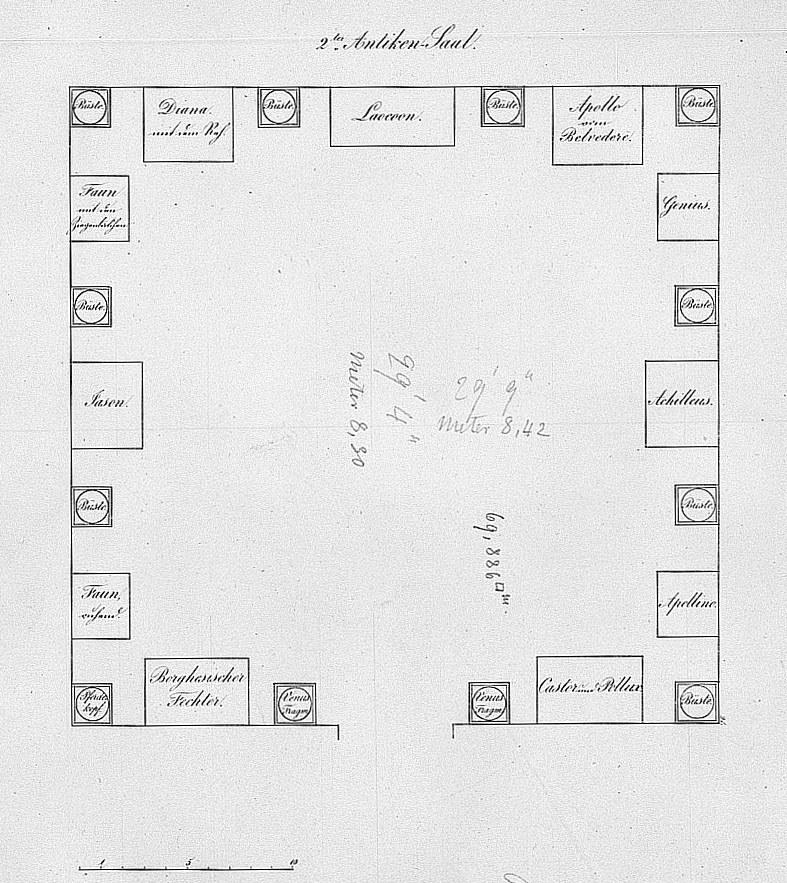
Historical
Photos
Of the skylight rooms with antiquities we can show historical photos from 1875. The presentation followed the concept already developed in 1833 and had only partially been changed and supplemented at later points.
At the time of the Institute’s opening on 15 March 1833, everything had not yet been realised as planned. For example, the plan of the room that was published in 1833 already indicated the placement of smaller socles with busts between the larger figures. The delivery of the casts of mainly Roman imperial busts had been delayed, however. The preserved photographs therefore reflect the ideal state, which the visitor of 1833 could not yet enjoy.
The decoration
of the room
According to an unknown critic, the decoration of the second skylight room with antiquities was clearly inferior to that of the first.
“gaudy and cluttered”
Similar to the Early German and Italian rooms, the ceiling was decorated with portrait medallions, each showing “two heads of famous Greeks”. As in the Early German room, the ceiling featured four additional images.
The mural above the “Laocoön Group” showed the word “XAIPE”, written in Greek capitals. This ancient Greek greeting was decorated with a laurel wreath and surrounded by burning torches. Recognisable above the entrance was the lyre of Apollo, the God of the Muses. A contemporaneous description helps identify the images depicted in the centre above the longitudinal walls. Above the “Jason” on the west wall (the “Landsdowne Sandal Binder”, actually a Hermes), Philipp Veit had planned an image of the Golden Fleece, while the “Achilles” (actually the “Ares Borghese”) was to be presented in combination with his shield, as described by Homer. As “XAIPE” represented Art and the lyre represented Poetry, the Fleece and the shield symbolised the “dealings and life of the Greek” (Vorläufige Mittheilungen 1833, p. 8).
The “Kunst-Blatt” critic was disappointed, however. In Veit’s studio, he had seen the design sketch for the shield of Achilles, which would later be exhibited in the reception room to the left
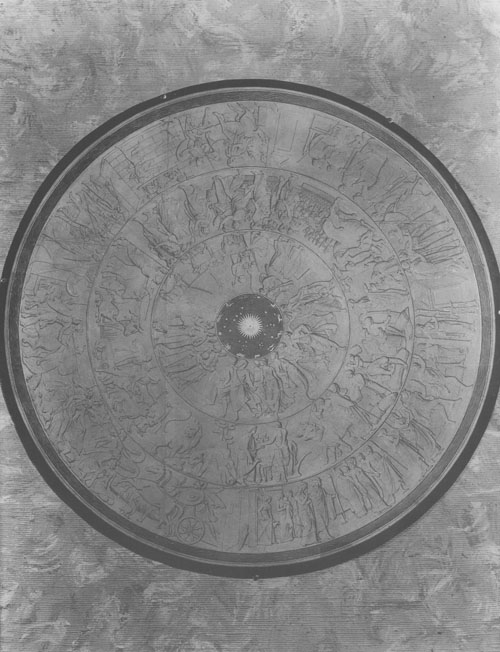
“In its uncompleted state, the mural painting in the second Antiquity room did not reveal the composition’s visual richness.”



